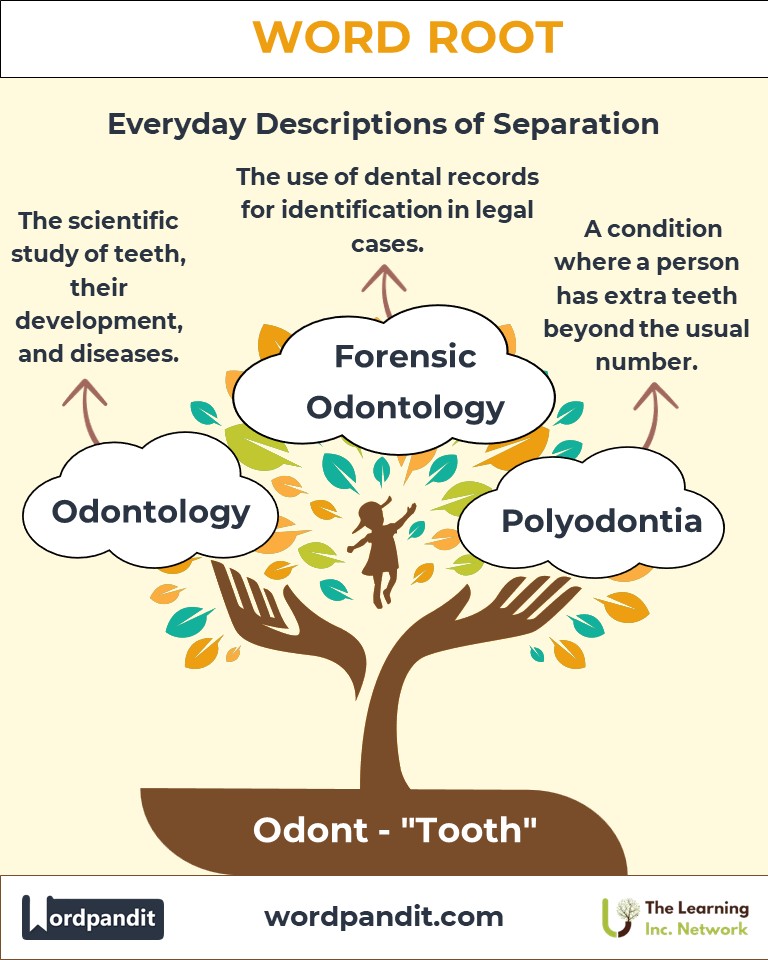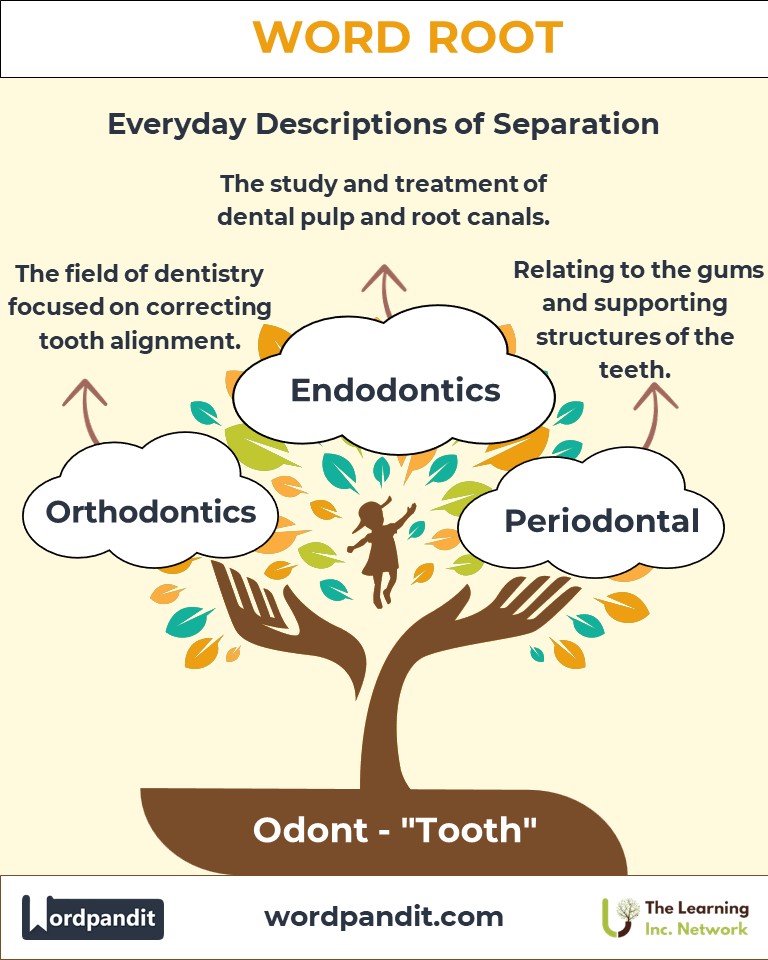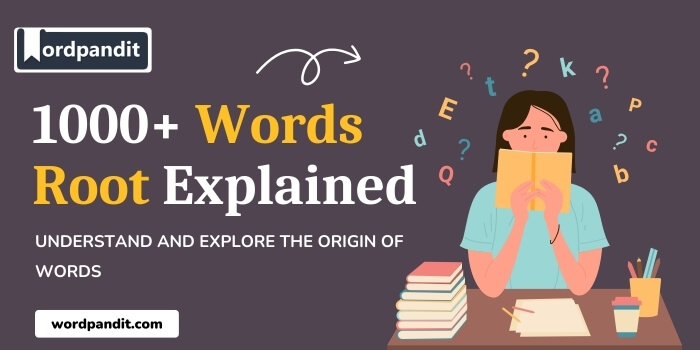Odont: The Fascinating World of Teeth in Language and Science
Byline:
Discover the intriguing significance of the word root "odont," derived from Greek, meaning "tooth." From orthodontics to periodontal, this root forms the basis of terms that explore dental health, anatomy, and even cultural expressions.

Table of Contents
- Introduction: The Core of "Odont"
- Etymology and Historical Journey
- Mnemonic: Unlocking the Power of "Odont"
- Common "Odont"-Related Terms
- "Odont" Through Time
- "Odont" in Specialized Fields
- Illustrative Story: "Odont" in Action
- Cultural Significance of the "Odont" Root
- The "Odont" Family Tree
- FAQs about the "Odont" Word Root
- Test Your Knowledge: "Odont" Mastery Quiz
- Conclusion: The Enduring Legacy of "Odont"
Introduction: The Core of "Odont"
What do a dentist, an orthodontist, and a periodontist have in common? Their professions revolve around the root "odont," pronounced (oh-DONT), which means "tooth" in Greek. This root has not only shaped medical terminology but has also influenced how we understand oral health, anatomy, and even cultural expressions about smiles and teeth.

Etymology and Historical Journey
The root "odont" originates from the Greek word odous (genitive: odontos), meaning "tooth." Ancient Greeks were among the first to study the anatomy and health of teeth, laying the foundation for modern dentistry. The term entered English through medical Latin during the Renaissance, solidifying its place in dental science.
Mnemonic: Unlocking the Power of "Odont"
Imagine a cartoon dentist holding a giant toothbrush with "ODONT" written on its bristles, reminding you of its connection to teeth.
Mnemonic Device:
"ODONT is all about oral care—dentists, braces, and clean teeth everywhere!"
Common "Odont"-Related Terms
- Orthodontics
Pronunciation: or-tho-DON-tiks
Definition: The branch of dentistry dealing with the correction of irregularly positioned teeth.
Example: "Orthodontics has transformed her smile with perfectly aligned teeth." - Periodontal
Pronunciation: pe-ri-oh-DON-tuhl
Definition: Pertaining to the structures surrounding and supporting the teeth, such as gums.
Example: "Periodontal disease can lead to tooth loss if untreated." - Odontology
Pronunciation: oh-don-TOL-uh-jee
Definition: The scientific study of the structure, development, and abnormalities of teeth.
Example: "Odontology plays a crucial role in forensic science for identifying remains." - Endodontics
Pronunciation: en-doh-DON-tiks
Definition: The branch of dentistry concerned with the pulp and tissues inside the tooth.
Example: "Root canal treatments are a specialty of endodontics." - Polyodontia
Pronunciation: pol-ee-oh-DON-shuh
Definition: A condition where an individual has more teeth than usual.
Example: "The patient was diagnosed with polyodontia after an X-ray revealed extra molars."
"Odont" Through Time
- Ancient Dental Practices: Ancient civilizations used primitive tools to care for teeth, recognizing their importance for health and appearance.
- Modern Dentistry: In the 18th century, the term "odontology" became formalized as dental science developed into a specialized medical field.
"Odont" in Specialized Fields
- Medicine:
- Orthodontics: Straightens teeth for functionality and aesthetics.
- Endodontics: Focuses on saving teeth through root canal therapy.
- Forensic Science:
- Odontology: Helps identify individuals based on dental records.
- Paleontology:
- Teeth Fossils: Provide insights into diets and evolution.
Illustrative Story: "Odont" in Action
Dr. Lina, a passionate orthodontist, faced a challenging case: a teenager with severe misalignment. By using innovative techniques in orthodontics, she not only corrected the alignment but also boosted the teen’s confidence. This success reminded her why she pursued odontology—to give people smiles that changed their lives.
Cultural Significance of the "Odont" Root
Teeth have been symbols of health, beauty, and strength across cultures. From the tooth fairy in Western folklore to ancient talismans made of teeth, the importance of oral health transcends time and geography.

The "Odont" Family Tree
- Dent (Latin: tooth):
- Dentist: A specialist in oral health.
- Denture: A set of artificial teeth.
- Maxill (Latin: jaw):
- Maxilla: The upper jawbone.
- Maxillofacial: Relating to the face and jaw.
- Gingiv (Latin: gum):
- Gingivitis: Inflammation of the gums.
- Gingivectomy: Surgical removal of gum tissue.

FAQs About the "Odont" Word Root
Q: What does "odont" mean?
A: "Odont" is a Greek root meaning "tooth." It forms the basis of many terms in dentistry and oral health, such as orthodontics and periodontics.
Q: What is orthodontics?
A: Orthodontics is a branch of dentistry focused on diagnosing, preventing, and correcting irregularities in tooth alignment and jaw positioning. Braces and clear aligners are commonly used tools in this field.
Q: How does odontology assist forensic science?
A: Odontology is vital in forensic science for identifying individuals through dental records, such as X-rays and tooth patterns. Teeth can reveal age, diet, and sometimes circumstances of death.
Q: What is periodontal disease?
A: Periodontal disease, or gum disease, affects the tissues surrounding and supporting teeth. It can progress from inflammation of the gums to infections that damage the bone and lead to tooth loss.
Q: How does odontology differ from general dentistry?
A: General dentistry covers routine dental care, while odontology is the scientific study of the structure, development, and abnormalities of teeth, often overlapping with forensic science and advanced dental research.
Test Your Knowledge: "Odont" Word Root Quiz
1. What does "odont" mean?
2. What does "periodontal" relate to?
3. What is polyodontia?
4. Which field focuses on dental pulp?
5. What is the study of teeth and their structures?
Conclusion: The Enduring Legacy of "Odont"
From ancient tools to advanced dental technology, the root "odont" underscores humanity’s dedication to oral health. It bridges disciplines from medicine to forensic science and continues to inspire innovations in how we care for our teeth. Understanding this root not only enriches our vocabulary but also deepens our appreciation for the vital role teeth play in our lives.












